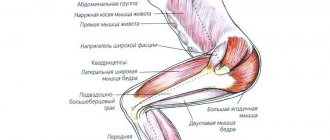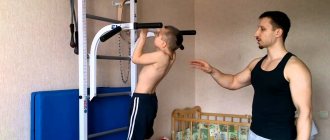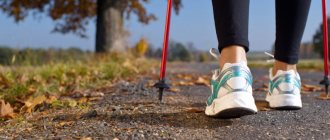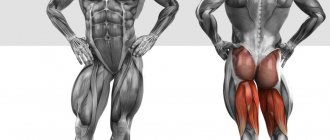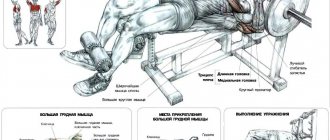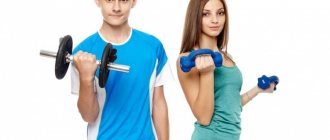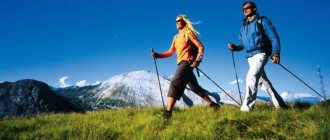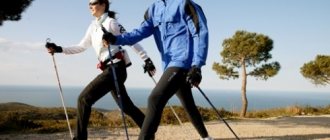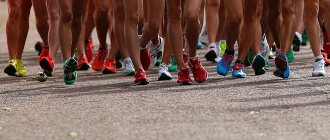The essence of walking in a half-squat
Many people are aware that sedentary work and life can lead to various unpleasant and even dangerous diseases associated with the heart, joints or back. Walking gives the muscles the necessary and moderate load, which can activate all organs and vital systems of the body, warming it up, improving blood circulation, accelerating metabolism, improving the immune system, and brain function.
Advice
There are practically no contraindications to walking; this is what distinguishes it from other physical activities. Many who practice sports or therapeutic walking know that it comes in various types. However, the most trained and physically active people often prefer goose-stepping. But it should be borne in mind that to perform it you must adhere to a certain technique and have the appropriate level of sports skills.
Half squat exercise
The half squat exercise will help tone your gluteus maximus and thigh muscles. There are 3 options for performing this exercise. Let's look at each of them in detail.
1. Half squat on one leg with support on a vertical plane.
Stand with your side to the wall, bring your feet together. Place one hand, bent at the elbow, against the wall (palm at shoulder level), the other hand on your belt. Squat down slightly so that the leg closest to the wall is bent to approximately 100⁰. Press the second leg (working) to the first leg and bend it at the knee so that the internal angle between the thigh and shin is about 80⁰. During the squat process, the hand should not be static: slide your palm down the wall at the same time as lowering the body.
Repeat 10 times on each leg. After a minute's rest, perform the series of exercises again. Maintain your posture, keeping your back straight. Supporting your balance with your palm against the wall helps you maintain your balance. In this case, the hand serves only for support; its muscles should not tense and feel the weight of your body.
If the exercise is performed correctly, you should feel tension in the hamstrings and buttocks. If you feel excessive heaviness and discomfort in the muscles, you can squat on one leg and, returning to the starting position, stand on both.
Half squat on one leg with support on a vertical plane (method 2)
Starting position, as in the first option.
Squat down, bending the leg closest to the wall at the knee to 90⁰. Then rotate it inward, placing the outer surface of the shin on the thigh of the other leg (just above the knee). In this case, the supporting leg is bent so that the angle between the back of the thigh and the lower leg is about 100⁰. Return to the starting position.
Repeat the half squat 10 times for each leg. After a minute, perform the complex again.
When returning to the original position, it is better to leave the working leg on the supporting leg. But if this is difficult for you, you can initially stand on two legs.
If the exercise is performed correctly, you will feel the muscles of the supporting leg stretch. And the lower you squat, the stronger the tension in muscle tissue
It is important to feel that the muscles of both legs are stretched evenly
Half squat on one leg without support
Stand on a flat surface, feet together, hands on your belt.
Bend one leg at the knee (angle 100 - 110⁰), press the second leg tightly to the supporting leg and bend at the knee so that the angle between the inner surface of the thigh and shin is 70-80⁰. Make sure your legs bend at the same time. Then we return to the starting position.
Do the exercise 10 times for one leg, then 10 times for the other. Take a minute break and repeat the complex again.
It is important to maintain posture and balance. At the initial stage, the depth of the squat and the bend in the knee joint may be greater, but over time they need to be reduced to the required level
As you perform each of these exercises, remember that you need to squat while inhaling, and rise while exhaling. Take your time, the main thing is not speed, but quality.
The one-leg half squat exercise is great for beginners; the sets of exercises will expand and become more complex as new articles on my blog are published. Subscribe so you don't miss the most interesting things!
Types of half-squat walking
There are two types of this exercise: squat and half-squat . Walking in a squat differs in that during movement the legs are completely bent, while walking in a half-squat implies half-bent legs. In addition, when walking in a squat, the fully bent legs should be slightly spread in different directions, and you should also place your leg along the entire length of the foot. When performing this exercise, you must always maintain a straight back position, while ensuring that your arms remain in a free position. When performing this type of walking, you should place your hands on your knees.
When choosing to walk in a semi-squat, in preparation for performing the exercise, you need to stand on the front of your feet, bending your knees. In addition, the back should also be in a straight position, while the hands are kept on the belt.
This is interesting
- [uaf_vkcount url='https://beginogi.ru/kakie-krossovki-dlya-bega-po-asfaltu-luchshe/']
What are the benefits of 20 minutes of brisk walking every day?
- [uaf_vkcount url='https://beginogi.ru/hodba-pri-varikoznom-rashirnii-ven-mozhno-li-zanimatsya-skandinavskoy-hodboy-pri-varikoze/']
Walking with varicose veins. Is it possible to do Nordic walking if you have varicose veins?
The ideal complex for the buttocks
If your goal is a toned butt, then do the exercises we described above. Squats on stairs, lunges and jumps are great for working your buttocks. Running will help keep not only your butt toned, but also your legs.
Do the exercise on the stairs for weight loss in the warm season. If you like to run in the park, then do exercises with steps afterwards. This complex replaces cardio training and helps burn calories quickly.
To be more prepared, you can find other training options on the Internet, where many photos and videos of training are provided.
Sample charging plan
In order to maintain body tone, it is enough to exercise 2-3 times a week. Both morning and evening are suitable for classes.
Before training, be sure to warm up. To do this, choose to run up the stairs. Easy jog of 5-10 minutes. warms up the body. Also stretch all your joints. Do some exercises for your arms, neck and legs. After this you can start charging:
- Start with a side squat.
- Then do lunges on the stairs.
- The next step will be a squat rise.
- Then do long jumps.
- Finish your exercise with a finger lift.
Such a small complex will help a beginner begin to work out his legs and butt. Each exercise is done 2-3 times. If heavy, shorten the workout by performing one set. If you are used to loads, then feel free to add additional elements.
Start training your body now, and in a month you will see the first results.
Video training
https://youtu.be/4hDFWYISK4Q
https://youtu.be/Fd2u6v0cH9g
Is it possible to practice single file walking?
Before you begin to engage in this type of therapeutic walking, you should make sure that your physical fitness is at the proper level. To be completely sure of this, there is special testing. The athlete's pulse is measured in a sitting position. In this case, indicators of functional endurance are determined according to the following criteria: heart rate less than 60 - good, less than 70 - satisfactory, more than 75 - bad.
In addition, you can check the heart rate readings after a person has climbed the stairs to the 4th floor. In order to find out whether single file walking is suitable for you or not, you should always measure your endurance. If the test shows a result of less than 60, then you can freely practice walking in a half-squat; if the result is less than 70, then you can do this, but you should be careful. If your score is from 70 to 75 or more, then it is too early to move on to the exercise, and you need to pay more attention to general training.
Exercises
1 Walking without carrying
.
- The heel of one foot touches the toes of the other.
- Walking along the line; legs in a normal, natural position, arms extended horizontally from shoulder to hand.
- Walking along a line, feet in a natural position, arms horizontal, neck straight, head raised.
2.1. Walking no line
feet in a natural position, arms extended horizontally, head straight, flag in one hand.
2.2. Walking along the line while carrying a bell, while trying not to let it ring; or carrying a “pendulum” so that it does not swing
lace.
2.3. Walking with a tablespoon in your hand, there is a ball in it, we try to prevent it from moving or falling.
3. Walking while carrying an object in both hands.
- Walking along a line, feet in a natural position, holding a tray in your hands, on which there may be various objects. At the beginning there is only one item on the tray. Keep your head straight.
- Walking along the line, feet again in a natural position, head straight, holding the flag in both hands.
- Walking along the line, feet in natural position,
head straight, in hands a tray on which:
- empty glass;
- half filled glass;
- a glass filled to the brim.
3.4. Walking along the line, feet in a natural position, carrying individual parts of the pink tower or perhaps the entire tower. You can also wear colored top hats or try to carry turrets out of them.
4.We transfer the object to the head.
4.1. Walking along a line with a book, a basket of fruit or other unbreakable objects that do not make noise when dropped, such as small balls, on your head.
4.2. Walking along a line with a cup of water on your head.
Of particular interest: walking along the line should be interestingly designed. In addition, attention should be paid to ensuring that children consciously monitor the coordination of their movements.
__________________________________________________________________
5. Different types of walking:
5.1. Walking on toes, on heels, with high knees, side step, side step, back step, small and wide step, cross step, heel-to-toe roll, walking in a half-squat;
5.2. Walking - imitation of animal movements (foxes, bear cubs, bunnies, swans, frogs, etc.);
5.3. Demonstration of human emotions through walking (the gait of a cheerful or sad person) or creating the image of a cheerful, sad, thoughtful, confused, etc. person using one or another gait. Then it is possible to guess the image or have a short conversation;
5.4. Walking while performing tasks (with stopping, squatting, turning), for example, walk - jump - small step - turn three times, snake walking, walking with a clap under the knee, easy running, light jumping, running
“wheelbarrow” (holding the neighbor’s legs).
6. Balance exercises.
6.1. Walking on a board, on a bench, on a log, on a ribbed board;
- Walking with stepping over objects, over the slats of a ladder laid on the floor, walking on an inclined board, slowly circling in both directions, walking on a rope, walking while rolling a ball in front of you;
- Running with two glasses: one with water, the other empty. The runner pours water from one glass to another while walking, trying not to spill the water;
- Running together, hugging each other. Light music may be played during these exercises.
Age: 2.5-6 years or more
.
Error control:
visual and acoustic.
Vocabulary expansion:
names of gait patterns and body parts.
Where is the best place to study?
For the benefit of walking in single file, and for its effect to be truly noticeable, you need to follow the technique during training and carefully prepare for it. The most suitable place for goose walking exercises is an open space with fresh air. Clean clearings located at a sufficient distance from polluted highways are best suited for training.
You should use different types of walking only at certain times when you reach your best physical condition. The first classes should be slow, with a gradual acceleration of the pace. You can move on to walking in a squat only in the final stage, after long training, when your body is ready for stronger loads.
https://youtu.be/KkqLp_EFc38
Squat weight on chest and shoulders
How much weight can you lift in a front squat compared to a back squat? The answer is very simple: if in both exercises you squat to the end, i.e. to the lowest point of the squat, then the weight ratio is 85%. That is, if you can squat with a barbell weighing 100 kg on your back, then the weight of the barbell for a front squat will be about 85 kg.
The only reason not many lifters achieve this ratio is because they don't get into a deep squat when doing back squats. Thus, they slightly exaggerate the actual weight that they could lift in this exercise. And these numbers are not just a theory.
Some of the best heavyweight lifters, such as Paul Anderson, Vladimir Marchuk, Alexander Kurlovich and Mark Henry, front squatted at least 317.5 kg, and Leonid Taranenko, the holder of the absolute world record in the clean and jerk, squatted 300 kg for 3 reps .
Two other weightlifters who also deserve attention are three-time Olympic champion Pirros Dimas of Greece and Dursun Savinch of Turkey. They both weighed 85 kg and front squatted over 272 kg.
Note that these front squat results cannot be compared to the results of powerlifters who squat 450 kg or more on their shoulders. After all, as a rule, they squat in special equipment (overalls, knee bandages, etc.) and only with partial amplitude.
The absolute record of all time was set by Australian weightlifter Varrick Brunt, who squatted a 356 kg barbell on his chest using a technique with arms crossed in front, which makes it more difficult to maintain balance. By the way, his best result in squats with a barbell on his shoulders was 355 kg, and his best set in high-repetition squats was 350 kg for 10 repetitions! At the same time, Brant’s height is 1.78 m, and his weight is 150 kg.
